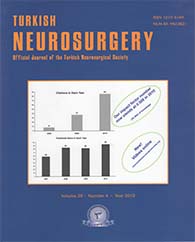Turkish Neurosurgery
2010 , Vol 20 , Num 4
Profound Blockage of Cxcr4 Signaling at Multiple Points Using the Synergy Between Plerixafor, Mirtazapine, and Clotrimazole as a New Glioblastoma Treatment Adjunct
University of Vermont, Psychiatry, Burlington, USA
DOI :
10.5137/1019-5149.JTN.3334-10.0
CXCL12 signaling at CXCR4 is important in glioblastoma growth promotion as
a migration-directing chemokine and as a mitosis-stimulating cytokine system.
Recent developments in other areas of medicine may have made it now possible
to comprehensively block glioblastoma's use of CXCL12 signaling. CXCL12
signaling at CXCR4 requires an active intermediate conductance Ca2+-activated
K+ channel to function. Plerixafor (AMD3100) is a new small molecular weight
inhibitor of CXCR4, FDA approved to aid in stem cell mobilization. Inhibition of
CXCR4 by plerixafor is expected to inhibit particularly the glioblastoma stem cell
population by inhibiting that sub-population's homing to the protective hypoxic
niche. Histamine signals through the H1 receptor in glioblastoma cells to activate
the intermediate conductance Ca2+-activated K+ channel also, thereby forming a
potential bypass for inhibition of CXCR4-initiated signaling. The antidepressant
mirtazapine is perhaps the most potent H1 antagonist in common clinical use.
By inhibiting H1 stimulation of intermediate conductance Ca2+-activated K+
channels, it could prevent circumvention of CXCR4 inhibition by that path. The
anti-fungal clotrimazole directly inhibits the intermediate conductance Ca2+-
activated K+ channel at clinically achievable and well-tolerated doses. These
three drugs used simultaneously are potential low morbidity paths to deeply
inhibit CXCR4/CXCL12 signaling during cytotoxic glioblastoma treatment.
Keywords :
CXCL12, CXCR4, Glioblastoma, Homing, Hypoxic, Plerixafor





